Reviews
Ivan Kral
USA, 1976
Credits
Review by Victoria Large
Posted on 24 September 2011
Source 16mm print
Categories American Punk
When The White Stripes filmed their first concert DVD, which was released in 2004, they chose to use Super 8 cameras instead of the modern digital equipment that was obviously available to them. The choice was aesthetic - a means of preserving, and indeed self-consciously amplifying - the band’s mystique. I mention this because it feels relevant to discussion of the virtues of Ivan Kral and Amos Poe’s legendary concert documentary The Blank Generation, a grainy, black-and-white Super 8 chronicle of the nascent New York punk scene. In an age where HQ footage of a gig from to last night could well be available to view on YouTube the next morning, it’s easy to imagine viewers losing patience with The Blank Generation’s lo-fi look, collage-like editing (In this year’s doc Blank City, Poe copped to taking speed in order to finish editing the movie on a tight deadline.), and out-of-sync sound. But on the other hand, viewers with an interest in this era in New York’s history, and particularly lovers of the music featured in the film, could find themselves bewitched by The Blank Generation’s dreamlike tour of a now-bygone, then-burgeoning scene.
Some concert films have a welcome demystifying quality. It can be a relief to see live, humanizing footage of legendary performers if we’re more accustomed to seeing posed photographs on record sleeves. By contrast, The Blank Generation’s no-budget tactics lend its subject matter a notable sense of unreality. The performers look iconic in black-and-white, and iconic they are: there are appearances from Patti Smith, The Ramones, Blondie, Television, Talking Heads, New York Dolls, The Heartbreakers, and Wayne (now Jayne) County. Almost any still from the film could be mistaken for a famous rock and roll photograph.
Even when one’s eye drifts to endearing, unexpected little details - a smile from Patti Smith, Joey Ramone’s dirty Keds, David Byrne’s chipped tooth - there’s a palpable distance from the performers that has only been compounded by time. Though there are some live performances on the soundtrack, they are never synched with the imagery, so there are moments where a performer is mouthing words but we hear an instrumental; and Kral and Poe sometimes switch to a different track mid-song only to switch back again, like fussy music fans toying indecisively with their radio. In short, there’s never any illusion that you’re really at CBGB, never any sense that Debbie Harry or Wayne County is shimmying onstage in front of you. The Blank Generation is a film made by insiders of the scene that it documents, but most of us watching it today remain conspicuous outsiders.
Yet to say that the film (perhaps accidentally) keeps us at a distance is not to suggest that The Blank Generation is not a worthy and enjoyable piece of work. Your mileage may vary; particularly when it comes to segments dedicated to less familiar bands, but the film is unique in its status as a punk document that is entirely of its time and place. What’s more, The Blank Generation was a key film in New York’s emerging No Wave cinema, making it a particularly potent meeting of cinema and punk rock. It screened as the final feature film in the HFA’s “American Punk” rep series, and in that sense it offered an interesting feeling of ending at the beginning. The Blank Generation features New York City sounds that would resonate across the country and across the pond, and in some ways make all of the other films in this series possible. In that regard, The Blank Generation is an indispensable piece of film and music history.
More American Punk
-

Times Square
1980 -
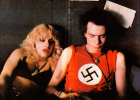
D.O.A.: A Rite of Passage
1980 -
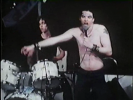
The Decline of Western Civilization
1981 -
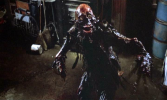
The Return of the Living Dead
1985 -
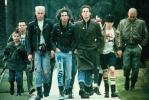
Suburbia
1984 -
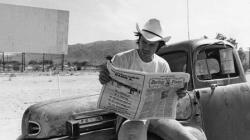
Border Radio
1987 -
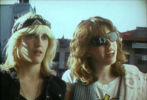
Desperate Teenage Lovedolls
1984 -

The Blank Generation
1976
We don’t do comments anymore, but you may contact us here or find us on Twitter or Facebook.



